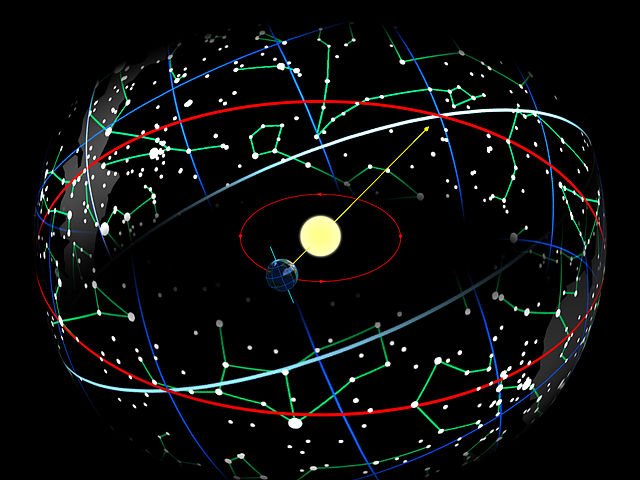Why Your Zodiac Might Be Wrong! and the Meaning of the Equinox.
The zodiac is a way of dividing the night sky based on sections correspondent to part of the sky the sun is in based on its relations to other stars in the sky. Each is a belt of constellations through which the Sun, Moon, and planets appear to move. It serves as the foundation for astrology, a practice that associates celestial movements with human life and events.
Many people look to the zodiac for guidance or insight into the mysteries of the universe and our lives. Some people think it is all made up, and that the sign of the zodiac doesnt have any real effect. Some are stronger believers. We’re here today, not to debate the validity of esoteric and exoteric astrology, but to explain how some of these systems are set up to read the stars and how a common misconception may have you mislabeled as the wrong sign!
There are two distinct zodiac systems - the Sidereal and Tropical Zodiacs - which can lead to discrepancies in determining one's astrological sign. As we celebrate the Spring Equinox, it's an opportune time to delve into these differences and explore their significance.
The Sidereal Zodiac
The Sidereal Zodiac is based on the actual positions of the constellations in the sky. In this system, the zodiac is divided into 12 equal segments, each named after the constellation that occupies that space. Due to the Earth's precession - a slow, cyclic wobble in its axis - the constellations drift gradually over time. This means that the astrological signs in the Sidereal Zodiac do not align perfectly with the calendar months, causing a discrepancy of about 24 days when compared to the Tropical Zodiac.
The Tropical Zodiac
The Tropical Zodiac, more commonly used in Western astrology, is based on the Earth's relationship with the Sun, rather than the constellations. This system divides the zodiac into 12 equal segments, with each sign beginning at a specific point in the Earth's orbit. The starting point for this zodiac is the Vernal Equinox, the moment when the Sun crosses the celestial equator from south to north, marking the beginning of spring in the Northern Hemisphere.
The Precession of the Equinox: This cycle takes 26,000 years.
The Spring Equinox
The spring equinox, also known as the vernal equinox, is an astronomical event that occurs twice a year, around March 20 or 21 (in the Northern Hemisphere) and September 22 or 23 (in the Southern Hemisphere). It marks the moment when the Earth's axis is tilted neither towards nor away from the sun, resulting in roughly equal amounts of daylight and darkness at all latitudes.
During the spring equinox in the Northern Hemisphere, the sun crosses the celestial equator, which is the imaginary line in the sky that marks the equator of the Earth projected onto the celestial sphere. At this moment, the length of day and night are nearly equal, with the days becoming longer and the nights shorter as the Earth continues its orbit around the sun. This shift in daylight and darkness is what marks the beginning of spring in the Northern Hemisphere.
The spring equinox has been celebrated by many cultures and religions throughout history as a time of renewal, rebirth, and new beginnings. It is also a time when many people participate in rituals, such as spring cleaning or planting new crops, to symbolize the start of a new cycle of growth and productivity.
The Spring Equinox is a significant event in both zodiac systems. In the Tropical Zodiac, it marks the beginning of the astrological year and the first sign, Aries. In the Sidereal Zodiac, the equinox is considered the point of reference for determining the position of the astrological signs. However, due to the Earth's precession, the actual position of the constellations during the Spring Equinox has shifted over time, causing a misalignment between the two zodiacs.
Sidereal vs. Tropical
The Difference Between Sidereal and Tropical Zodiacs: The main difference between the Sidereal and Tropical Zodiacs lies in their reference points. While the Sidereal Zodiac is based on the actual positions of the constellations, the Tropical Zodiac uses the Earth's orbit and the equinoxes to determine the beginning of each sign. This results in a discrepancy of about 24 days, which can cause one's astrological sign to differ between the two systems. For example, if you were born on April 20th, you would be considered an Aries in the Tropical Zodiac, but a Pisces in the Sidereal Zodiac.
Date differences between sidereal and tropical astrological systems.
Conclusion: Understanding the differences between the Sidereal and Tropical Zodiacs can shed light on why your astrological sign might be different than you initially thought. The Spring Equinox serves as a reminder of the importance of the Earth's relationship with the Sun in determining our place within the zodiac. Ultimately, whether you choose to follow the Sidereal or Tropical Zodiac, it's essential to appreciate the rich history and symbolism that both systems offer.












